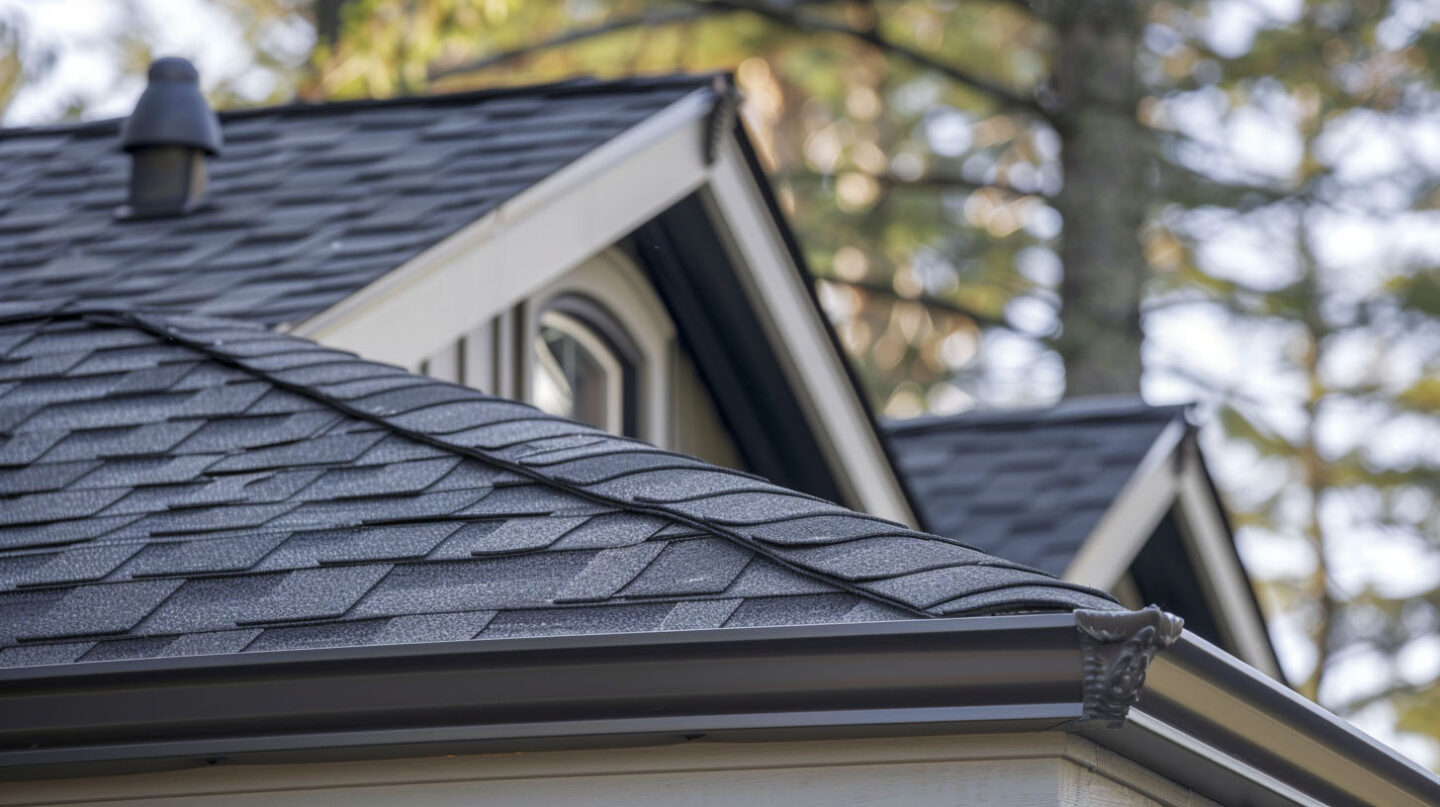Understanding the complexities of roof ventilation is crucial for maintaining a healthy attic climate. Proper ventilation plays a significant role in regulating attic temperature, preventing moisture buildup, and ensuring a balanced airflow throughout the home. For hip roofs, the configuration can present unique challenges, particularly when soffit intake options are limited. At The Shingle Master, we specialize in implementing effective venting strategies tailored to your specific roof design in Raleigh, NC. Our expert team is dedicated to extending the roof’s lifespan and enhancing the overall efficiency of your HVAC system, ensuring that your home remains comfortable and energy-efficient.
Understanding Hip Roofs and Ventilation
Effective ventilation plays a crucial role in the performance of hip roofs, which are characterized by slopes that meet at the peak of the roof. These designs can sometimes complicate the airflow dynamics, particularly when considering the types and placements of vents. An efficient attic ventilation system is essential to manage attic temperature and prevent moisture buildup, ensuring optimal performance of your roofing system. Proper air circulation is vital to promoting fresh air intake and expelling hot air, thus enhancing overall comfort in the living space.
What Makes Hip Roofs Challenging to Vent
The unique geometry of hip roofs presents distinct challenges for proper ventilation. Unlike gable roofs, hip roofs have a uniform slope on all sides, which can limit both intake and exhaust options. This configuration often results in restricted airflow, making it difficult to maintain the optimal attic temperature and prevent moisture buildup. Additionally, the positioning of hip vents along one portion of the roof line can complicate the exhaust ventilation process, leading to potential hot air stagnation and the formation of ice dams during colder months.

The Importance of Proper Attic Ventilation
Ensuring adequate attic ventilation plays a crucial role in maintaining the overall health of your home. Proper ventilation helps regulate attic temperature, preventing excessive heat accumulation and cold air moisture buildup, which can lead to structural damage and ice dams. A balanced attic ventilation system enables the efficient exchange of intake air and exhaust ventilation, promoting fresh air circulation. Inadequate ventilation can compromise performance, affecting both the roof system and HVAC efficiency, ultimately impacting living space comfort and raising energy costs over time.
The Role of Soffit Intake in Attic Airflow
Soffit vents help fresh air get into the attic space. They are very important for hip roofs. These vents let cool air in and help hot air move out through the exhaust ventilation. This keeps the attic temperature in check and lowers moisture buildup. Good airflow stops ice dams from forming on the roofline. Having enough soffit intake makes your roofing system work well and keeps your house safe and strong.
Why Soffit Vents Are Essential for Hip Roofs
Soffit vents play a critical role in maintaining the health of hip roofs by facilitating proper ventilation throughout the attic space. Acting as intake points, these vents allow fresh air to enter, creating a balanced airflow that carries away hot air and moisture buildup. This exchange is vital in preventing issues such as ice dams and rot, which can compromise roofing materials. By ensuring an adequate intake ventilation system, soffit vents ultimately contribute to an effective exhaust ventilation strategy, promoting the longevity of the entire roof system.
How Limited Soffit Intake Impacts Air Circulation
Limited soffit intake and knee walls drastically alters the dynamics of air circulation within a hip roof structure. Insufficient intake ventilation leads to a deficit of fresh air entering the attic space, impairing the natural airflow necessary for effective exhaust ventilation. Consequently, the accumulation of hot air and moisture buildup can occur, elevating attic temperatures and increasing the chances of developing ice dams or other issues that compromise the roofing system’s integrity. Proper airflow is critical to maintaining a balanced attic temperature and prolonging the lifespan of roofing materials.
Common Issues with Restricted Soffit Intakes
Limited soffit intakes can create significant challenges in maintaining proper attic ventilation. This restriction often leads to excessive moisture buildup and increased attic temperatures, resulting in potential damage to the roof deck and insulation. Additionally, without adequate airflow, the efficiency of the entire HVAC system can diminish, elevating energy costs. Hot air struggles to escape, causing discomfort in the living space below and possibly leading to the formation of ice dams during colder months. Addressing these issues is essential for optimal roof performance.

Signs of Poor Ventilation in Hip Roofs
Indicators of inadequate ventilation in hip roofs manifest through various symptoms. Excessive heat accumulation leads to elevated attic temperatures, often causing shingles to deteriorate prematurely. Additionally, moisture buildup can result in mold growth or water stains on the ceilings below, signaling an urgent need for intervention. Homeowners may also notice an increase in energy costs due to malfunctioning HVAC systems struggling to regulate indoor temperatures. Ultimately, addressing these signs promptly is crucial in maintaining the integrity of your roofing system and overall living space.
Risks of Inadequate Attic Venting—Moisture & Heat
Inefficient venting can lead to significant moisture buildup in the attic, promoting conditions for mold growth and wood deterioration. A lack of airflow results in elevated humidity, which can compromise the integrity of the roof system and surrounding living space. Additionally, accumulated heat in an inadequately ventilated attic can raise attic temperature, ultimately affecting overall heating and cooling efficiency. This imbalance may strain HVAC systems, leading to higher energy costs and potential overheating, especially in extreme weather conditions. Proper ventilation is critical to mitigate these risks.
Alternative Venting Solutions for Hip Roofs
Several alternative venting solutions can enhance airflow and maintain optimal attic temperatures in hip roofs. Passive vents, such as turbine or box vents, can effectively promote exhaust ventilation, creating a balance in the intake and exhaust system. Additionally, installing low profile vents or ridge vents along the roof surface ridge line can optimize fresh air circulation, ensuring consistent airflow. For homeowners facing limitations in soffit intake, these options serve as viable adaptations to prevent moisture buildup and excessive heat retention within the attic space.
Gable Vents—Pros and Cons for Hip Roofs
Gable vents can be a viable option for enhancing ventilation in hip roofs, particularly in situations where soffit intake is limited. They facilitate exhaust ventilation by allowing hot air to escape from the attic space, which helps maintain a balanced airflow. However, the effectiveness of gable vents can be influenced by factors such as attic size and airflow direction. Without adequate intake ventilation, they may not sufficiently reduce moisture buildup, potentially leading to issues like ice dams or inadequate cooling during hot weather.

Low Profile Vents and Eyebrow Vents
Low profile vents and eyebrow vents offer unique advantages for improving attic ventilation, especially in hip roof systems. Their sleek design minimizes visual impact while effectively facilitating exhaust ventilation. Positioned along the roofline, these vents allow hot air to escape, promoting a balanced airflow when paired with soffit intake. Additionally, they help in mitigating moisture buildup by ensuring consistent air circulation within the attic space. Optimal integration of such vents contributes to regulating attic temperature and enhancing overall roof performance, crucial for maintaining the longevity of the structure.
Roof-Mounted Intake Vents as a Retrofit Option
Roof-mounted intake vents can be a good solution you use when you want better ventilation in hip roofs. These vents help fresh air come into the attic space, especially when there is not enough soffit intake. The vents make air move through the attic. This keeps moisture from building up and stops heat from collecting. When you use this type of exhaust vent, the air flow in the attic gets better. Your whole ventilation system becomes stronger, which helps keep the living space healthy. It also helps your roof last longer.
Choosing the Right Exhaust Vents for Hip Roofs
Ridge Vents—Benefits and Limitations for Hip Roofs
Ridge vents offer significant advantages for hip roofs by promoting continuous exhaust ventilation along the roof ridge line. This passive venting system allows hot air to escape effectively, improving the overall attic temperature regulation. However, their performance can be limited in areas with low airflow, particularly if the intake ventilation—such as soffit vents—is insufficient or obstructed. Additionally, reliance solely on ridge vents may lead to an imbalance in the attic ventilation system, potentially contributing to moisture buildup and compromising the roofing structure over time.

Power Attic Fans and Solar-Powered Ventilation
Power attic fans, including power vents, offer an efficient way to improve airflow in hip roofs, especially when traditional intake options are limited. By actively expelling hot air, these fans can significantly reduce attic temperature, helping mitigate moisture buildup and the risk of ice dams during colder months. Solar-powered ventilation presents a sustainable alternative, harnessing renewable energy to drive air circulation without increasing electricity costs. Both solutions can enhance your attic ventilation system, ensuring a more comfortable living space while optimizing the performance of existing exhaust vents.
In Summary
Effective ventilation is crucial for maintaining optimal attic temperature and preventing issues like moisture buildup, which can harm both your roof system and living space. Hip roofs present unique challenges, especially when soffit intake is limited, necessitating the careful selection of different types of exhaust vents positioned at or near the top of your roof. Implementing a balanced attic ventilation system ensures a steady flow of fresh air and helps mitigate heat retention. Consulting with a knowledgeable roofing contractor can provide insights into the best options tailored to your specific roof type and configuration for efficient air circulation.
Frequently Asked Questions
How to vent a roof with no soffits?
To vent a new roof without soffits, consider installing roof-mounted intake vents or gable vents to facilitate airflow. Additionally, low-profile vents can be effective. Ensure exhaust vents, like ridge or power attic fans, are adequately positioned for optimal ventilation performance.
How to vent a hip roof without ridge?
To let air move well in a hip roof without a ridge, you can use things like gable vents or low-profile vents. These vents help air flow through the attic space. This can stop moisture buildup and help keep the place at a good temperature.

When should you not use a ridge vent?
Avoid using a ridge vent in situations where there is insufficient intake ventilation, as it can lead to negative pressure, drawing unconditioned air into the attic. Also, refrain from installing it on roofs with low pitch or where snow accumulation can obstruct airflow.
Read our blog: Code-Upgrade Coverage (Ordinance & Law): What It Means for Roofs


